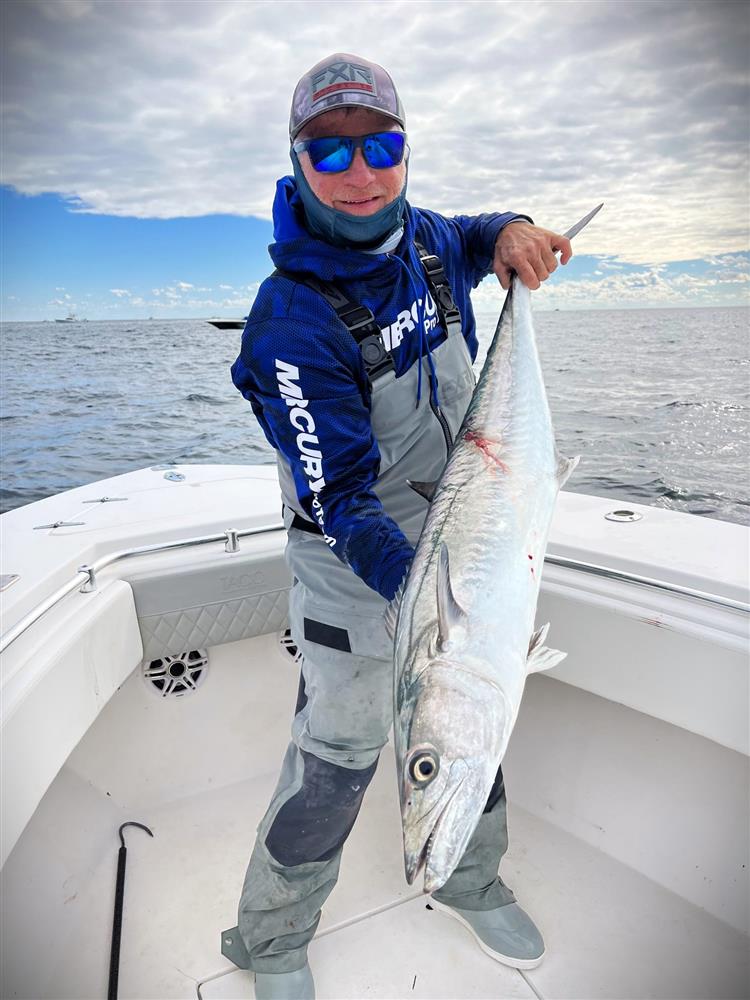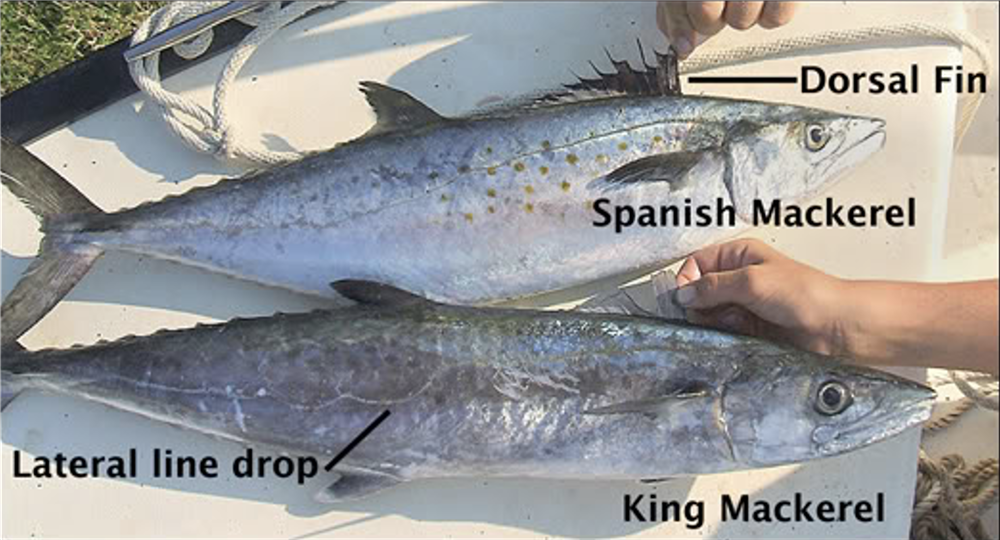For avid sport fishing enthusiasts venturing into the open waters, the thrill of the catch is incomparable. Among the many species that make nearshore fishing an exhilarating experience, distinguishing between the King Mackerel, Spanish Mackerel, and Cero Mackerel can be a challenge, especially when they are small. They often feed in the same areas and ambush the same bait pods. With differences in size regulations, it is critical to accurately identify each species. In this guide, we'll delve into the key differences that will help you recognize each and target these prized fish with confidence.

Captain Mark Henderson from the Liquid Fire Fishing Team holding a King Mackerel. Photo courtesy / Liquid Fire Fishing Team
Size Matters
One of the initial challenges in identifying these mackerels lies in their size, especially when they are small. King Mackerel, also known as Kingfish, are the largest of the trio, reaching lengths of up to 72 inches. Spanish Mackerel are typically smaller, ranging between 12 to 20 inches, while Cero Mackerel fall in between, with lengths averaging 20 to 30 inches. Paying attention to size can be a crucial first step in narrowing down the possibilities.
Coloration
While these mackerels share a general mackerel-like appearance, their coloration can offer valuable clues. King Mackerel tend to have a darker bluish green back and a silvery-white belly. Spanish Mackerel, on the other hand, have a distinct greenish-blue back with yellowish or white spots along their sides. Cero Mackerel display a similar color pattern to Spanish Mackerel but are often characterized by more prominent lateral stripes.
Lateral Line & Spots
The lateral line is a distinguishing feature on these mackerels, and paying attention to its characteristics can aid in identification. King Mackerel have a well-defined lateral line that dips sharply below the second dorsal fin. Spanish Mackerel also possess a distinctive lateral line but tend to be less pronounced than that of the King Mackerel. Cero Mackerel, while having a prominent lateral line, fall in between the other two in terms of definition.
When it comes to spots, Spanish Mackerel are known for their numerous round or oval-shaped spots on the upper sides of their body. King Mackerel may have a few scattered spots, but they are generally less prominent. Cero Mackerel, meanwhile, exhibit fewer and smaller spots than Spanish Mackerel, often arranged in a line along their sides.

Photo courtesy / Liquid Fire Fishing Team
Dorsal Fins
The dorsal fins of king mackerel, Spanish mackerel, and cero mackerel can vary slightly in color and shape, though they share some similarities:
- King Mackerel: The dorsal fin of a King Mackerel is typically a translucent medium gray with minimal speckling or spotting. The shape of the dorsal fin is relatively tall and pointed, especially in the front section with spines. The spines on the front part of the dorsal fin are usually robust and well-defined.
- Spanish Mackerel: The dorsal fin of Spanish Mackerel is usually a much darker gray or black color than the King Mackerel. It has more pronounced spotting or patterning; often, a white spot will be present. The shape of the dorsal fin is slightly more rounded compared to the King Mackerel. The spines on the front part of the dorsal fin are less robust and may be less pronounced compared to King Mackerel.
- Cero Mackerel: The dorsal fin of Cero Mackerel shares similarities in color with Spanish Mackerel, often being dark gray to black with some spotting or patterning. The shape of the dorsal fin is similar to Spanish Mackerel but may appear slightly more elongated. The spines on the front part of the dorsal fin are similar to those of Spanish Mackerel, being less robust than those of King Mackerel.
Teeth & Jaw Structure
Examining the teeth and jaw structure can be a quick and reliable method for differentiation. King Mackerel possess large, well-defined teeth with a noticeable serration. Spanish Mackerel have smaller, more numerous teeth, and their jaw structure is less robust than that of King Mackerel. Cero Mackerel fall in between, with teeth that are larger than Spanish Mackerel but not as prominent as those of King Mackerel.
Conclusion
Mastering the art of differentiating between King Mackerel, Spanish Mackerel, and Cero Mackerel when they are small is a valuable skill for offshore anglers. By focusing on size, coloration, lateral lines, spots, and teeth, you can enhance your ability to identify these prized fish, adding a new layer of excitement and satisfaction to your offshore fishing adventures. Remember, keen observation and attention to detail are the keys to becoming a mackerel identification expert on the open seas. Happy fishing!









